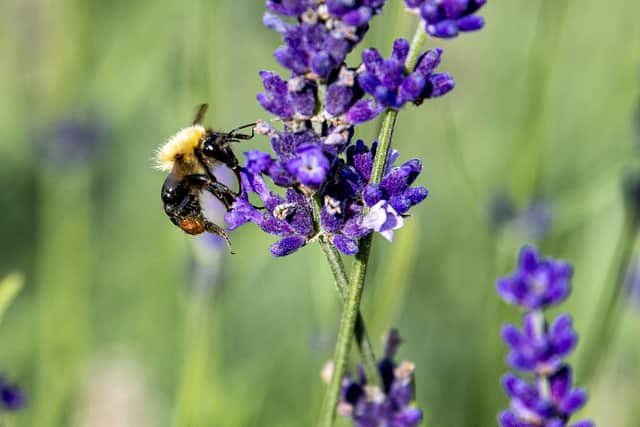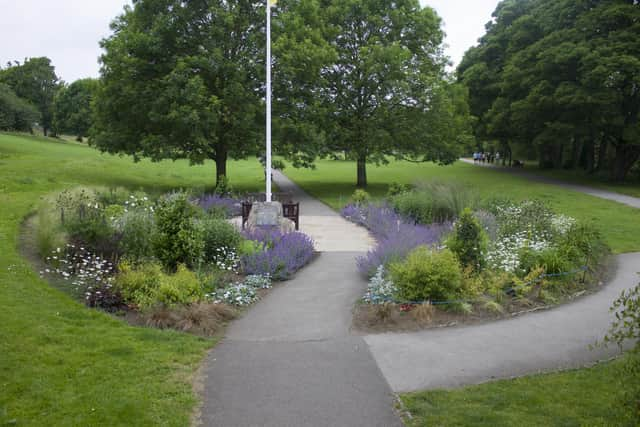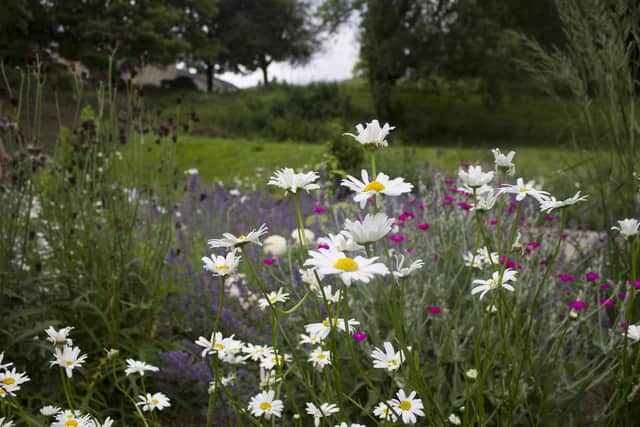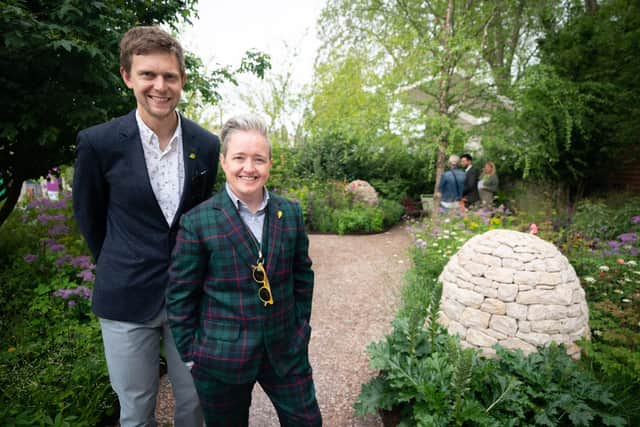Yorkshire experts give their top tips on how to make our gardens more eco friendly
Here, Yorkshire garden designers and community gardeners give us some great tips:
*Helen Taylor specialises in landscape and garden design for homes in the Ilkley area and her voluntary work includes advising on a community rewilding venture in Addingham, and helping volunteers from Friends of Ilkley Riverside Parks with choosing eco-friendly and drought resistant planting while creating habitats for insects.
Advertisement
Hide AdAdvertisement
Hide Ad“It’s about a different way of gardening with less mowing, perennial planting, reducing water loss and bringing back hedges and trees,” says Helen.


Pauline Munro, deputy chair of Friends of Ilkley Riverside Parks, says: “The park was just grass and we wanted to enhance biodiversity and encourage wildlife, which Helen helped us plan for. We have planted trees and perennial flowers and created a meadow and there are areas where we don’t mow.
“We now leave seedheads on the ground for insects and we pile off-cuts of wood by the riverside to create habitat, among other things. We get lots of lovely comments on our Facebook page about how the park has changed for the better.”
Helen Taylor’s tips for domestic gardens: Avoid plastic grass plants and flowers. The Society of Garden Designers Campaign “say NO to plastic grass” reveals this: fake lawns can contaminate the underlying soil and surrounding watercourses with micro-plastic fragments, whereas real grass stores carbon.
Advertisement
Hide AdAdvertisement
Hide AdLawns, soil and planting cool a garden’s surface and surroundings while artificial grass does not and can be extremely hot underfoot in the summer. It also creates no habitat for wildlife.


A lawn provides space for worms to live and birds to dig while longer grass provides nectar for pollinators and places to breed, feed and lay. No daisy chain was ever made while lying on a patch of fake grass.
*Select water wise plants and minimise the need for watering , as concerns about water use gather pace. See the RHS website for suggestions.
*Plan your planting in the winter. Rather than waiting until May to go to the garden centre and hurriedly buying a few plants to give colour in your garden, it’s best to plan ahead, and plant shrubs and perennials in the winter. This is more sustainable and cost-effective.
Advertisement
Hide AdAdvertisement
Hide Ad*Choose to reuse by harvesting water from roofs with water butts, salvage and recycle, buy locally grown plants and think about splitting plants and sharing them plus pot on seedlings.


*Avoid pesticides, go peat free and plant native trees. www.helentaylorgardendesign.co.uk
Melissa Morton, garden designer, Ilkley: Any water left from drinking water bottles tip into garden containers or border soil outside rather than down the sink and use rainwater for indoor plants too.
*Soil is precious so minimise removing it from the garden and avoid walking on soil, particularly when wet.
Advertisement
Hide AdAdvertisement
Hide Ad*Plants in pots. Small pots are higher maintenance and require more watering and feeding so go for deeper pots. I usually aim for a minimum of 50cm high, allowing roots to go deeper. When buying plants from garden centres, ask them if they will take used pots back. www.melissamorton.co.uk


*Linda Taylor organises the planting and aftercare of the park in Burley in Wharefdale and runs her own garden maintenance business. She says:
*Improve your soil by adding organic matter, such as compost or well-rotted horse manure and make your own compost. See the RHS website for details.
*Many people are horrified by greenfly. Where are the ladybirds? they ask. They will come, but their food source has to arrive first.
Advertisement
Hide AdAdvertisement
Hide Ad*Get to know your critters. Most people are familiar with ladybirds but how many recognise the young nymphs? They are the little brown bugs with zig zag orange stripes on their back and they devour greenfly. If you kill the greenfly with chemicals the ladybirds and their nymphs will have nothing to eat.
*Slugs might eat your hostas but frogs and hedgehogs eat slugs. Put lettuce leaves around your plants as a decoy as slugs will choose it over hostas
*A mixed hedge is best for wildlife but if you have a fence allow climbers like honeysuckle and clematis to scramble up as they are good for pollinators.
*Use cardboard boxes as a weed suppressant. Remove tape, staples and glue, then fold it flat and place anywhere on borders where weeds are and this will smother them. Cover it with a layer of mulch so it looks natural and everything will break down and improve your soil.
Advertisement
Hide AdAdvertisement
Hide AdRachel Forbes, landscape and garden designer, says: Move away from annual bedding plants. Cheaper and more sustainable is to sow your own annuals, such as easy to grow Cosmos, nasturtium and sweet peas.
*Making a pond introduces more biodiversity to garden and minimise hard landscaping materials and ornamentation as most ends up in landfill. www.rachelforbeslandscapedesign.co.uk
Camilla Grayley, garden designer, York, says: Plant for pollinators by using single flowering varieties plants and leave a shallow tray or saucer with pebbles and water out for bees to drink from.
*Don't worry about keeping the garden too tidy, piles of leaves or rotting logs are great places for insects to make their home. Leave the lawn uncut for longer and add wildflowers and bulbs into the grass. www.camillagrayleydesign.com
Advertisement
Hide AdAdvertisement
Hide Ad*Melissa Morton and Helen Taylor have a free walk-in session explaining the garden design process and how this can be tailored to you. It is on June 1, 2pm and 6pm at 4 Manor Cottages, Ilkley. Email [email protected] for details.